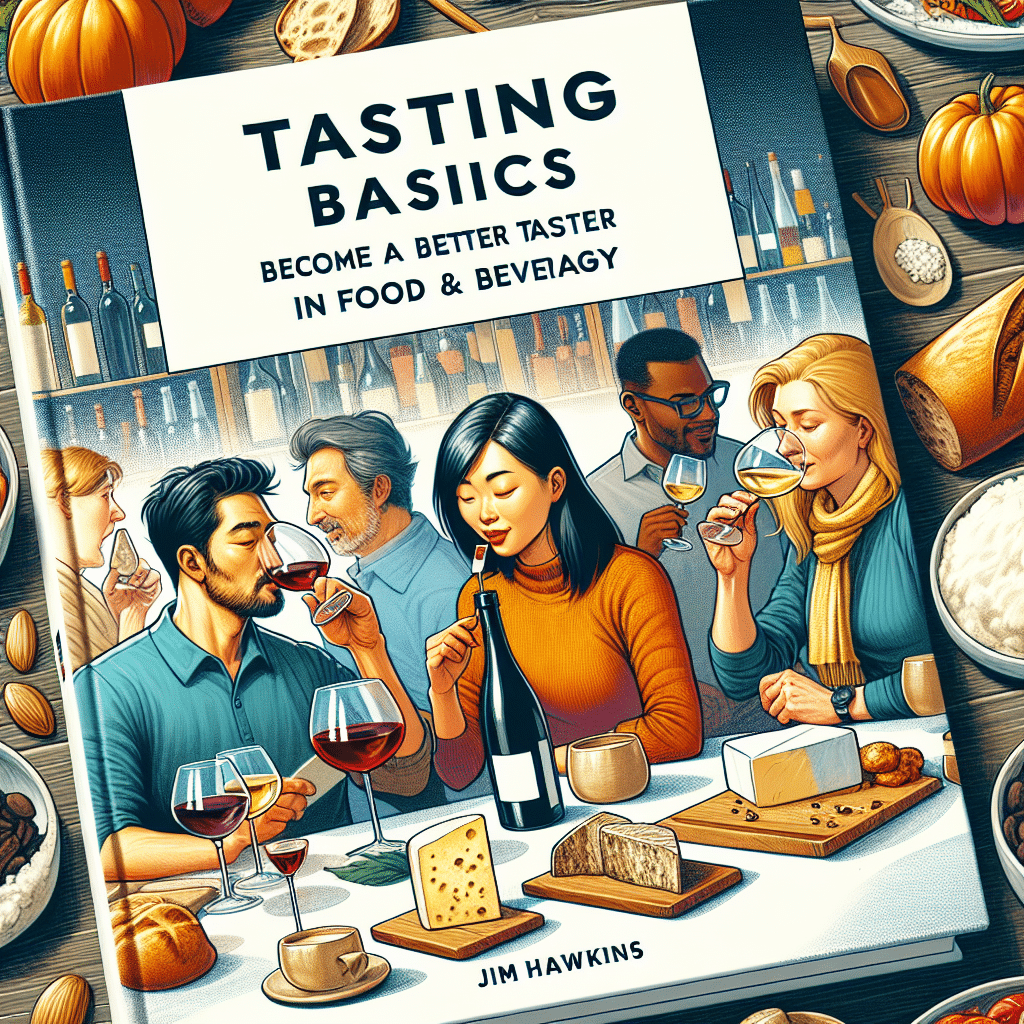Tasting Basics: Become a Better Taster in Food & Beverage
-
Table of Contents
- Become a Better Taster: Mastering the Art of Food & Beverage Tasting
- Understanding the Tasting Process
- Developing Your Palate
- Techniques for Tasting Food
- Techniques for Tasting Beverages
- Building a Tasting Vocabulary
- Practical Applications of Tasting Skills
- Conclusion
- Enhance Your Tasting Journey with ETprotein’s High-Quality Protein Products
Become a Better Taster: Mastering the Art of Food & Beverage Tasting

Tasting is an art form that requires much more than just a functioning palate. It’s a complex process that involves all the senses and a keen understanding of the components that make up a dish or a drink. Whether you’re a food enthusiast, a budding chef, or a beverage connoisseur, honing your tasting skills can greatly enhance your appreciation and enjoyment of culinary delights. In this comprehensive guide, we’ll explore the basics of tasting and provide practical tips to help you become a better taster in the world of food and beverages.
Understanding the Tasting Process
The tasting process is a sensory experience that involves sight, smell, touch, taste, and even hearing. Each sense plays a crucial role in how we perceive the flavors and textures of what we consume. Here’s how each sense contributes to the tasting experience:
- Sight: The visual appeal of food or a beverage can greatly influence our expectations and initial impressions.
- Smell: Aroma is a key component of flavor, and many nuances are detected through our olfactory senses.
- Touch: Texture and mouthfeel are important aspects of how we experience food and drinks.
- Taste: Our taste buds can detect sweet, sour, salty, bitter, and umami flavors, which combine to create a complex flavor profile.
- Hearing: The sound of food, such as the crunch of a crisp apple or the sizzle of a steak, can also affect our perception of taste.
Developing Your Palate
Developing your palate is a journey that involves training your senses to recognize and appreciate a wider range of flavors and textures. Here are some steps to help you refine your palate:
- Expand Your Food Horizons: Try new and diverse foods regularly. This will expose you to a variety of flavors and ingredients.
- Slow Down: Take the time to savor each bite or sip, paying attention to the different sensations and flavors.
- Learn the Language: Familiarize yourself with tasting terminology to better articulate what you’re experiencing.
- Practice Mindful Eating: Eat without distractions to fully concentrate on the tasting experience.
- Pair and Compare: Experiment with food and beverage pairings to understand how different flavors interact with each other.
Techniques for Tasting Food
When tasting food, it’s important to engage all your senses and follow a systematic approach. Here’s a step-by-step guide to tasting food like a pro:
- Look: Observe the presentation, color, and texture of the dish.
- Smell: Inhale the aromas deeply to identify different scent notes.
- Taste: Take a small bite and let it sit on your tongue. Identify the primary flavors and how they evolve.
- Feel: Pay attention to the texture and temperature of the food in your mouth.
- Listen: Notice any sounds that accompany the eating experience, such as crunchiness or juiciness.
Techniques for Tasting Beverages
Tasting beverages, especially wine, coffee, or craft beer, involves a similar approach but with some specific considerations:
- Look: Examine the color, clarity, and viscosity of the beverage.
- Swirl: Gently swirl the drink to release its aromas.
- Smell: Take short sniffs to discern the different aromatic compounds.
- Sip: Take a small sip and let it coat your mouth. Note the initial flavors, body, and balance.
- Swallow or Spit: Depending on the context (such as wine tasting), you may choose to swallow or spit out the beverage. Observe the aftertaste or finish.
Building a Tasting Vocabulary
Having a rich vocabulary is essential for describing and communicating your tasting experiences. Words like “earthy,” “citrusy,” “robust,” and “velvety” can help you pinpoint specific characteristics. To build your vocabulary:
- Read tasting notes and reviews from experts in the field.
- Join tasting groups or forums to discuss and compare notes with others.
- Keep a tasting journal to record your impressions and the terms that resonate with you.
Practical Applications of Tasting Skills
Improving your tasting skills has practical applications in various aspects of life:
- Cooking: Better tasting abilities can help you season food more accurately and create balanced dishes.
- Food & Beverage Industry: Professionals can use their refined palates to ensure quality control and develop new products.
- Personal Enjoyment: A well-developed palate can enhance your overall dining and drinking experiences, making them more enjoyable and memorable.
Conclusion
Becoming a better taster is a rewarding endeavor that can deepen your appreciation for the culinary arts. By understanding the tasting process, developing your palate, and learning to articulate your experiences, you can unlock a whole new world of sensory delights. Remember, tasting is a skill that can be cultivated over time with patience, practice, and passion.
Enhance Your Tasting Journey with ETprotein’s High-Quality Protein Products
If you’re passionate about food and beverages, incorporating high-quality ingredients into your diet is essential. ETprotein offers a range of organic bulk vegan proteins that can enrich your culinary creations. Their products, known for their neutral taste and non-GMO, allergen-free attributes, are perfect for those looking to maintain a healthy lifestyle without compromising on flavor. Whether you’re developing new recipes or simply enjoying a nutritious meal, ETprotein’s offerings can elevate your tasting experience.
About ETprotein:
ETprotein, a reputable protein and L-(+)-Ergothioneine (EGT) Chinese factory manufacturer and supplier, is renowned for producing, stocking, exporting, and delivering the highest quality organic bulk vegan proteins and L-(+)-Ergothioneine. They include Organic rice protein, clear rice protein, pea protein, clear pea protein, watermelon seed protein, pumpkin seed protein, sunflower seed protein, mung bean protein, peanut protein, and L-(+)-Ergothioneine EGT Pharmaceutical grade, L-(+)-Ergothioneine EGT food grade, L-(+)-Ergothioneine EGT cosmetic grade, L-(+)-Ergothioneine EGT reference grade and L-(+)-Ergothioneine EGT standard. Their offerings, characterized by a neutral taste, non-GMO, allergen-free attributes, with L-(+)-Ergothioneine purity over 98%, 99%, cater to a diverse range of industries. They serve nutraceutical, pharmaceutical, cosmeceutical, veterinary, as well as food and beverage finished product distributors, traders, and manufacturers across Europe, USA, Canada, Australia, Thailand, Japan, Korea, Brazil, and Chile, among others.
ETprotein specialization includes exporting and delivering tailor-made protein powder and finished nutritional supplements. Their extensive product range covers sectors like Food and Beverage, Sports Nutrition, Weight Management, Dietary Supplements, Health and Wellness Products, and Infant Formula, ensuring comprehensive solutions to meet all your protein needs.
As a trusted company by leading global food and beverage brands and Fortune 500 companies, ETprotein reinforces China’s reputation in the global arena. For more information or to sample their products, please contact them and email sales(at)ETprotein.com today.












